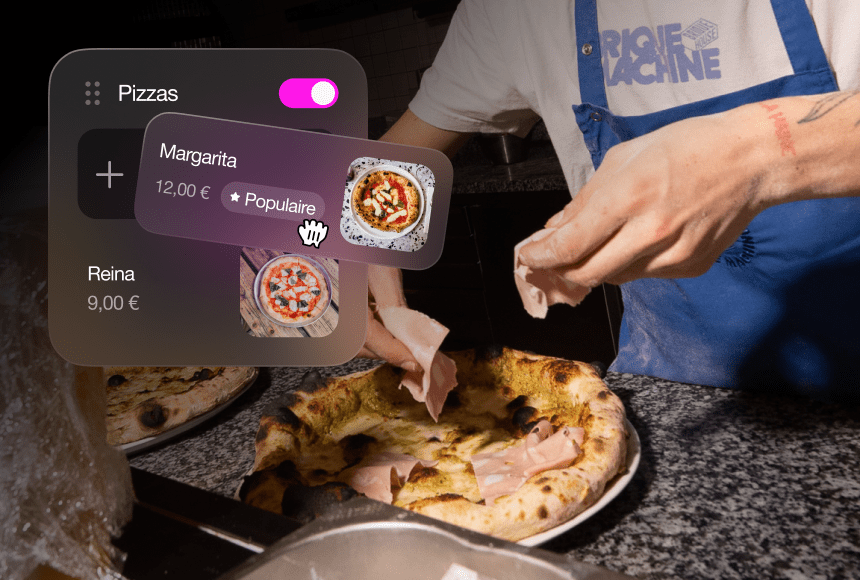
Revamping Your Menu: Meeting the Growing Call for Plant-Based, Local, and Eco-Conscious Dishes
Why Consumer Preferences Are Shifting
In the UK, evolving consumer tastes are reshaping the restaurant landscape. Diners no longer judge a meal solely by its flavour and presentation. Instead, many now also consider sustainability, vegetarian or vegan options, and how locally sourced the ingredients are. According to a Guardian article, a growing number of British citizens are open to altering their diets to reduce their carbon footprint—indicating a clear appetite for responsible dining. For restaurant owners, these shifts provide a tangible opportunity: by adapting your menu to these new expectations, you can attract and keep a loyal, forward-thinking audience.
Fortunately, you don’t have to overhaul your entire concept overnight. Small, thoughtful adjustments can instantly signal your commitment to a more inclusive, planet-friendly dining experience. Whether you’re running a quaint local café or a high-end brasserie, catering to vegetarians, embracing local produce, and prioritising sustainable cooking methods are increasingly essential. This article explores how to make those updates strategically, so your menu appeals to these modern demands—and stands out in a competitive market.
1. Recognising the Value of Vegetarians and Flexitarians
While fully plant-based diners represent a growing segment, there’s also a wide demographic of “flexitarians”—people who aren’t strictly vegetarian or vegan but opt for meatless dishes several times a week. Their motivations vary: some want a lower environmental impact, others aim for better health or animal welfare. If your menu caters only to traditional omnivores, you’re likely missing out on these increasingly influential diners.
- Offer more than one token dish: One vegetarian main and a side salad might suffice as a minimalist approach, but it won’t impress your flexitarian or vegan guests who expect variety. Dedicate time to developing multiple, robust non-meat recipes—like a hearty mushroom bourguignon or a vibrant chickpea tagine.
- Highlight unique proteins: Ingredients like tofu, tempeh, or quinoa can transform a menu, giving you protein-rich alternatives to traditional meat. When spiced and cooked creatively, these can compete with any beef or chicken dish for centre-stage appeal.
- Label clearly: Use a simple, eye-catching marker (e.g., “V” or “VG”) so diners spot these offerings with ease. This also reassures them you’ve thoughtfully considered diverse dietary needs.
Incorporating more vegetarian and vegan dishes is about more than just ticking a box. It signals you respect all customers’ values, from those who rarely touch meat to others who are passionate about plant-based living.
2. Championing Local Sourcing and Authenticity
If your current supply chain depends on far-flung vendors, you might be missing an opportunity to showcase local heritage and cut down on transport emissions. Diners gravitate toward restaurants that value their region’s unique produce, whether that’s Kentish strawberries, Cornish seafood, or the distinctive cheeses of Yorkshire.
2.1 Benefits of Going Local
- Freshness and flavour: Ingredients grown or produced nearby often arrive at your kitchen sooner and in better condition. This can directly enhance the taste and presentation of each dish.
- Community ties: Collaborating with local farmers fosters good relationships within your area, appealing to diners who prefer to support independent businesses and sustainable economies.
- Lower carbon footprint: Shorter transportation distances reduce greenhouse gas emissions. Eco-conscious customers notice these efforts, building loyalty through shared values.
2.2 Building Local Partnerships
Look around for artisanal bakers, family-owned produce farms, or craft breweries. A rotating seasonal special—“Today’s root veg from the organic farm down the road”—taps into diners’ desire to know exactly where their meal originated. Such collaborations can also inspire storytelling on your menu or social media, turning local farmers and producers into part of your restaurant’s extended family.
3. Prioritising Sustainability in Kitchen Practices
Adapting your menu to new consumer expectations doesn’t stop at the ingredient list. It also involves your cooking methods, waste reduction, and general eco-friendly practices. A more sustainable kitchen can cut costs in the long run while aligning with diners’ ethical considerations.
- Waste management: Start by conducting a simple waste audit. Identify which ingredients are thrown out most frequently, then adjust portion sizes or find creative ways to reuse scraps—like making vegetable stock or upcycling stale bread into croutons.
- Eco-friendly packaging: If you offer takeaway or delivery, switch to biodegradable or recyclable containers. Customers notice—and appreciate—when you avoid single-use plastic. Potentially, mention a small discount for diners bringing reusable containers or cups.
- Energy-efficient equipment: Upgrading older stoves or dishwashers might require initial investment, but modern, energy-saving appliances often pay for themselves in the form of lower utility bills—plus you can market these eco-credentials to your diners.
Small steps add up. Over time, implementing thoughtful, sustainable kitchen operations can differentiate you from competitors who haven’t yet prioritised eco-friendly solutions.
4. Making Sustainability and Ethics Part of Your Brand Story
Consumer attitudes have shifted such that people don’t just want green or veggie-friendly menus—they also want transparency about how a restaurant arrived at these decisions. Sharing your journey can forge closer connections with diners who appreciate your authenticity.
- Clear menu communication: A simple star, symbol, or short note next to certain dishes (e.g., “Locally farmed mushrooms from Sussex”) can give customers immediate insight without overwhelming them. An optional deeper dive can be offered in a blog post or a small menu insert describing your sourcing philosophy.
- Behind-the-scenes glimpses: Posting a quick photo on social media of your head chef visiting a local farmer or sampling a new vegetarian recipe fosters an inclusive feel. Diners see your real effort and appreciate the steps you’re taking, big or small.
- Team training: Don’t keep your staff in the dark. Let servers and line cooks understand why you partner with certain producers, why you aim for minimal waste, and how to talk knowledgeably about plant-based options.
When customers sense a genuine commitment, they’re more likely to support your restaurant’s growth. They see you as more than just a place to eat; they feel they’re contributing to a mindful, sustainable cycle of commerce.
5. Pricing and Portion Considerations
Adapting a menu to new, pricier local ingredients or premium plant-based products can pressure your budget. But you don’t need to skyrocket prices. Think about portion sizes or creative plating that emphasises value without relying solely on cost.
- Flexible menu sections: Consider half-portion offerings or build-your-own bowls. This helps diners with varied budgets or appetites while cutting down on wasted leftovers.
- Smart combos: Pair less expensive local veggies with higher-end proteins. For instance, a smaller portion of artisan cheese served alongside a beautiful medley of roasted UK-grown vegetables. The result can look premium, taste delicious, and justify a moderate price point.
- Spotlight value: If an item costs a bit more due to organic or local factors, highlight that. “Fresh local goat’s cheese from the Cotswolds—higher welfare, better taste” can help diners see the added cost as an investment in quality and sustainability.
Ultimately, many customers will pay slightly more if they sense the cost is going toward ethical ingredients, local sourcing, or a staff that values care. Balancing transparency with fair pricing helps everyone feel good about the transaction.
6. Embracing Tech to Communicate Your New Approach
It’s not enough to add a few vegetarian or local items and expect diners to notice. Let technology shine a spotlight on your enhancements. This is where digital solutions—from your website’s ordering page to your point-of-sale—can help unify the message.
- Online ordering with custom categories: If your takeout or delivery platform has advanced menu categories, group vegetarian, vegan, or locally sourced items together. Add short descriptive lines explaining the local produce or sustainable credentials to encourage excited clicks.
- Integrated payment flows: Tools like sunday allow you to seamlessly integrate online payments. After browsing your new sustainable or plant-based offerings, diners can quickly pay. This frictionless experience fosters loyalty—meaning they’ll likely return to reorder.
- Social media teasers: TikTok, Instagram, or Facebook posts can highlight your mouth-watering vegetarian plates, local farmers you collaborate with, or behind-the-scenes glimpses of staff prepping innovative green recipes. That leads to a loyal online following that drives footfall in real life.
By weaving sustainability and vegetarian offerings throughout your digital presence, you ensure prospective customers see how you’ve elevated your menu. The end result: a consistent brand that resonates from website to table service.
7. Gathering Feedback and Evolving Further
Adapting your menu to these new consumer expectations isn’t a one-and-done process. Palates shift, supply chains evolve, and environmental best practices change over time. Keep refining by listening attentively to your diners and staff.
- Encourage feedback: After a meal, ask, “Did you enjoy our new vegetarian special?” or “Would you like to see more local or sustainable items?” Offer a short online survey or comment card for deeper insights.
- Analyse sales data: Notice which green or veggie options frequently sell out, and which remain under-ordered. Perhaps you need to rename or re-describe certain items to spark interest.
- Stay in tune with trends: Keep track of new developments—like plant-based dairy alternatives or alternative flours—so you can incorporate them. Evolving your offerings regularly shows you’re current, creative, and listening.
Each incremental change builds on your restaurant’s reputation for caring about sustainability and dietary variety. This fosters repeat business and cements you as a trusted dining choice for socially conscious consumers.
Nurturing a Sustainable Future for Your Menu
Faced with rising interest in vegetarian fare, local sourcing, and environmentally minded practices, restaurants have a golden chance to reinvent themselves. By weaving plant-based and locally procured items into your menu, you not only cater to shifting consumer tastes but also showcase a commitment that resonates with modern diners. Alongside these changes, small acts—like minimising waste and adopting eco-friendly packaging—offer a holistic approach that builds credibility.
Ready for the next step? You could partner with local farms for fresh produce, develop mouth-watering vegetarian recipes that rival your classic bestsellers, or share behind-the-scenes glimpses of your kitchen’s green journey. And if you want to enhance the diner experience further, adopt a streamlined payment process—like sunday—so your new guests can enjoy these planet-friendly dishes without fuss at checkout.
Adapting your menu to meet evolving demands doesn’t mean discarding your identity or alienating long-time patrons. Instead, it’s about broadening your appeal—welcoming new vegetarian, flexitarian, and eco-aware diners into your fold, while inspiring existing customers to explore your innovative offerings. In so doing, you’ll future-proof your restaurant and contribute to a more sustainable, inclusive dining culture that thrives on authenticity, fresh perspectives, and genuine care for the planet.
Find out more today
Drop us your details below and we’ll reach out within the next 24
Make your menu work for you too.
With digital menus, you can manage different areas, times, menu types, add-ons, pictures, languages, allergen info and much more.


